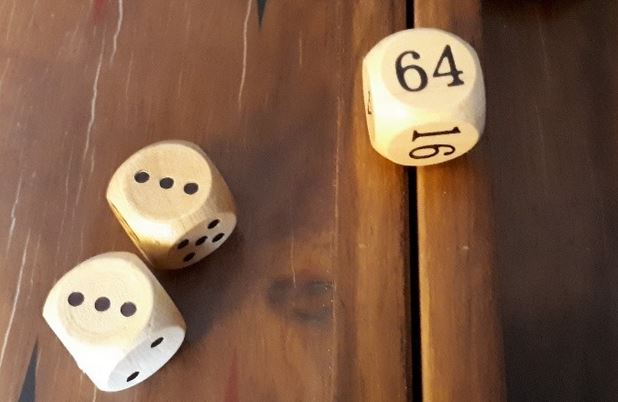Last updated on May 16, 2024
A lot of social backgammon players will have never used a doubling cube. It is not required to be used as part of the game and backgammon can certainly be enjoyed without the cube. After all the game of backgammon has been around for five thousand years and the doubling cube was only introduced in the 1920s. However, it brings a significant amount of new strategies into the game. Many backgammon historians credited the doubling cube with the resurgence of the pastime during the 20th century.
This Deluxe Backgammon post is for those newcomers or social players who would like to understand the use of the doubling cube. It presents an opportunity to expand your enjoyment of backgammon as the doubling cube will add a new element of strategy to the game.
The backgammon doubling cube resembles a regular die, but it is generally larger. It also has a different set of numbering. As opposed to a standard die, the numbers 2, 4, 8, 16, 32, and 64 are printed on the faces of the doubling cube. The doubling cube keeps track of the current stakes of the game. The cube is never rolled, but deliberately turned to the desired number.
Backgammon can be played as a match consisting of a series of games with players competing to reach a certain number of points to win. Additionally, it can be played as a set number of games, after which the player with the most points wins. Backgammon players who play for money will agree upon a specific cash stake per point. The more points the winner earns in a game, the higher the stakes that are won.
How to use the doubling cube
- Each backgammon game starts with a value of one point. The doubling cube is placed in the middle of the bar. At this stage, it is not controlled by either player.
- When a player feels they have the advantage in a game, that player can choose to offer a double before rolling the dice. This effectively doubles the value of the game.
- The opposing player can reject the offer, but concedes the game by doing so at the cost of one point.
- If the opposing player accepts the offer, the value of the game doubles from 1 to 2. A subsequent double would raise it from 2 to 4, or from 4 to 8, and so on.
When a player accepts a double, they take control of the doubling cube and is the only player who can make the next offer of a double. There can be a number of doubles during a game, so the cube can change hands several times. Although the highest number on the cube is 64, in theory, there is no limit to how high the stakes can be raised. Knowing when to accept a double and when to decline is a sign of a skilled backgammon player.
Related content
Doubling cube at Wikipedia.
Backgammon rules are available on this link.


Backgammon is a great game on its own, but adding the doubling cube add a fascinating new dimension. Try it.
Hi Sumeet, I agree with your thoughts, the doubling cube adds a new element to the game, especially match play. Take a look at some of our backgammon guides and thanks for taking the time to comment at Deluxe Backgammon, Jason.